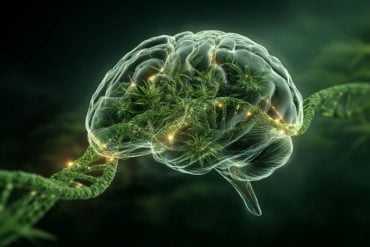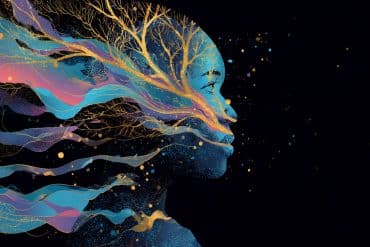Summary: New research reveals how the human brain processes vital signals from the heart and lungs, offering new insights into the complex brain-body integration essential for health and cognition.
The study identifies specific neurons in the thalamus that play a crucial role in integrating cardio-respiratory information, providing a deeper understanding of the functional pathways connecting internal organs to brain health. By employing microelectrode recordings during deep brain stimulation surgery, the researchers discovered that a significant proportion of neurons are responsive to cardiac and respiratory rhythms, highlighting the brain’s intricate mechanism for maintaining homeostasis.
This research paves the way for advancements in medical fields ranging from neurology to cardiology, emphasizing the importance of interdisciplinary collaboration in unlocking the mysteries of brain function.
Key Facts:
- Specific thalamic neurons process signals from the heart and lungs, shedding light on the brain’s role in integrating vital information for bodily regulation.
- Approximately 70% of recorded neurons responded to cardio-respiratory activity, with 30% showing responsiveness to multiple signals, underscoring the complexity of internal organ-brain communication.
- The study’s use of microelectrode recordings during neurological treatments offers unprecedented insights into how the brain maintains health through direct neurological and endocrine regulation.
Source: UNC
The human brain constantly receives information from the body, specifically from internal organs such as the heart and lungs. This information seldom reaches consciousness but is crucial for maintaining a healthy body and for influencing performance in the brain, including perception, emotion, and cognition.
Now, researchers are investigating how exactly the brain processes the incoming stream of information from the heart and lungs, leading to a broader understanding of brain-body integration and the resulting health or disease.
Publishing their work in the Proceedings of the National Academy of Sciences (PNAS), co-senior authors Vibhor Krishna, MD, associate professor of neurosurgery at the UNC School of Medicine; Ali Rezai, MD, director of the Rockefeller Neuroscience Institute and associate dean of neuroscience at the West Virginia School of Medicine; and Olaf Blanke, MD, PhD, director of the laboratory of cognitive neuroscience at the Swiss Federal Institute of Technology, discovered that specific neurons in the thalamus are actively involved in processing cardiac and respiratory signals.
“Each heartbeat and every breath create a rich, incoming stream of sensory information for the human brain,” said Krishna.
“However, a deeper understanding of how the brain integrates this information has remained elusive. We have been interested in discovering how the human brain achieves the integration of cardio-respiratory information and whether its breakdown is linked to any disorders of the brain, heart, or lungs observed in the clinic.”
Over the years, clinical and research teams collaborated to painstakingly study this integration using an established technique of microelectrode recording during deep brain stimulation surgery.
Using a new approach to study single neurons in three different thalamic regions, the researchers were able to observe a direct functional involvement of thalamic and subthalamic neurons in processing cardio-respiratory signals. This information can help to better characterize how subcortical regions of the brain process signals through a functional pathway from internal organs.
To complete this work, the research team took advantage of microelectrode recordings during deep brain stimulation for patients undergoing treatment for neurological conditions.
The researchers then used these recordings to investigate the activity of single neurons related to cardiac and respiratory functions in three subcortical regions: ventral intermedius nucleus and ventral caudalis nucleus of the thalamus, and the subthalamic nucleus.
They found that about 70% of the recorded neurons were modulated by either the heartbeat, the cardiac inter-beat interval, or the respiration.
These cardiac and respiratory response patterns varied largely across neurons both in terms of timing and their kind of modulation, the authors wrote. A substantial proportion of these visceral neurons – about 30% – were responsive to more than one of the tested signals, underlining specialization and integration of cardiac and respiratory signals in subthalamic nucleus and thalamic neurons.
“We think our work will be significant for several medical specializations, including cardiology, pulmonology, neurology, psychiatry, and psychological research,” Krishna said.
Rezai added, “Better understanding of the human brain is the next frontier. And interdisciplinary collaborations between functional neurosurgeons and neuroscientists will enable us to gain an unprecedented window into the inner functioning of the human brain.”
Applauding this research as a significant step forward, Nelson Oyesiku, MD, PhD, chair of the UNC Department of Neurosurgery, said, “We understand that the brain maintains homeostasis throughout the body through direct neurological and endocrine regulation.
“This research reveals that the incoming information from the heart and lungs is processed in the thalamic and subthalamic brain regions, besides other regions, enabling our brain to effectively assume its role in regulating bodily functions.”
About this breathing and neuroscience research news
Author: Mark Derewicz
Source: UNC
Contact: Mark Derewicz – UNC
Image: The image is credited to Neuroscience News
Original Research: Closed access.
“Single neurons in the thalamus and subthalamic nucleus process cardiac and respiratory signals in humans” by Vibhor Krishna et al. PNAS
Abstract
Single neurons in the thalamus and subthalamic nucleus process cardiac and respiratory signals in humans
Visceral signals are constantly processed by our central nervous system, enable homeostatic regulation, and influence perception, emotion, and cognition. While visceral processes at the cortical level have been extensively studied using non-invasive imaging techniques, very few studies have investigated how this information is processed at the single neuron level, both in humans and animals.
Subcortical regions, relaying signals from peripheral interoceptors to cortical structures, are particularly understudied and how visceral information is processed in thalamic and subthalamic structures remains largely unknown.
Here, we took advantage of intraoperative microelectrode recordings in patients undergoing surgery for deep brain stimulation (DBS) to investigate the activity of single neurons related to cardiac and respiratory functions in three subcortical regions: ventral intermedius nucleus (Vim) and ventral caudalis nucleus (Vc) of the thalamus, and subthalamic nucleus (STN). We report that the activity of a large portion of the recorded neurons (about 70%) was modulated by either the heartbeat, the cardiac inter-beat interval, or the respiration.
These cardiac and respiratory response patterns varied largely across neurons both in terms of timing and their kind of modulation. A substantial proportion of these visceral neurons (30%) was responsive to more than one of the tested signals, underlining specialization and integration of cardiac and respiratory signals in STN and thalamic neurons.
By extensively describing single unit activity related to cardiorespiratory function in thalamic and subthalamic neurons, our results highlight the major role of these subcortical regions in the processing of visceral signals.







